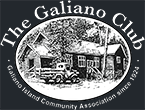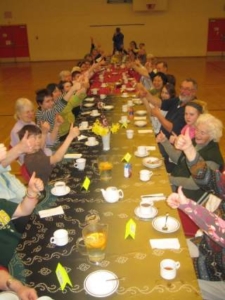Sheila Ripley and Jean Tully interviewed by Juna and Mana for Food Forever
 We lived in Cheshire England, the war was on, the war started in ’39. Food was rationed, we were only allowed so much per week per person. We were only allowed one egg per week per person. The food that was rationed for families was generally termed as fats which was butter or margarine or lard plus sugar and meat. Meat was rationed in a different way instead of them saying you can have so many ounces per week it would go by price, so they may say that for this period of time your meat ration would be a shilling. Therefore when you went to the butchers you would look around for the cheapest cut. You may get a lot of cheap meat or you may decide to get two chops. We were rationed because we were at war and we were an island and we got as lot of our food from different countries. The Merchant Navy sure helped us out. The convoys coming across the Atlantic they helped us out with food. Sometimes the rations were decided on by whether there had been a lot of shipping that had been bombed or torpedoed and there would be not as many ships coming in with food so then we knew that our rations would not be as big. We were often hungry. Oranges were very, very scarce and the only people to get oranges were expectant mothers and toddlers for the vitamin c. I don’t remember oranges at all and I never ate a banana until I came to Canada. Even sweets were rationed, sweets and chocolate you couldn’t just go to the store and buy some you needed a ration card. We couldn’t believe the variety of food when we came to Canada; rows and rows of cookies I remember particular. Even now I prefer to shop in a small shop where I can only see so many cookies so I don’t have to choose from 50 packets of cookies. We had never seen so much food. Well the ration was on for ten years by the time we came over so we had never seen so much food. We came over in ’49 and the rationing went on until ‘53/’54. The war was over in ’45 but we were still on ration. After the war we sent food to Germany and Europe. We were in need but they were more in need.
We lived in Cheshire England, the war was on, the war started in ’39. Food was rationed, we were only allowed so much per week per person. We were only allowed one egg per week per person. The food that was rationed for families was generally termed as fats which was butter or margarine or lard plus sugar and meat. Meat was rationed in a different way instead of them saying you can have so many ounces per week it would go by price, so they may say that for this period of time your meat ration would be a shilling. Therefore when you went to the butchers you would look around for the cheapest cut. You may get a lot of cheap meat or you may decide to get two chops. We were rationed because we were at war and we were an island and we got as lot of our food from different countries. The Merchant Navy sure helped us out. The convoys coming across the Atlantic they helped us out with food. Sometimes the rations were decided on by whether there had been a lot of shipping that had been bombed or torpedoed and there would be not as many ships coming in with food so then we knew that our rations would not be as big. We were often hungry. Oranges were very, very scarce and the only people to get oranges were expectant mothers and toddlers for the vitamin c. I don’t remember oranges at all and I never ate a banana until I came to Canada. Even sweets were rationed, sweets and chocolate you couldn’t just go to the store and buy some you needed a ration card. We couldn’t believe the variety of food when we came to Canada; rows and rows of cookies I remember particular. Even now I prefer to shop in a small shop where I can only see so many cookies so I don’t have to choose from 50 packets of cookies. We had never seen so much food. Well the ration was on for ten years by the time we came over so we had never seen so much food. We came over in ’49 and the rationing went on until ‘53/’54. The war was over in ’45 but we were still on ration. After the war we sent food to Germany and Europe. We were in need but they were more in need.
Coming to Canada
Friends of our lived in Chilliwak and my brother had just got of the army just after the war and the friends said come on over to Canada, it’s a beautiful place and lots of work and of course England was in a real big turmoil in 1946/47so he came over. And my Mum decided, right we’ll follow, so we followed him in 1949. I was 21 (Jean) and I was 17. You have no idea what a big change that was….we are still getting over it! Everything was so different, the amount of food….you could eat and then eat again if you wanted to. I remember coming over on the train and the waiter came to see what we wanted to eat and we chose ham, I think. He brought two plates and put them down in front of us, there was five of us and then he went back to get more food but we thought that these plates were between all of us because it was such a huge amount of food and what we were waiting for was more plates and knives and forks. I think he was quite stunned when I asked is this just for me? I think that after you have been with limited food for a long time you don’t need as much and I do really think that we were all very, very healthy children. And we have said between ourselves and friends of mine, “if only we could get back to the rations during the war”, everything was given to us for a purpose. It was the best food available at the time and obviously it was enough because none of us starved to death, although we often went to bed with an empty stomach. There was no sense in saying well go and get a cookie or a piece of toast. Well if you were permitted so many slices of bread a week and you ate two on Tuesday you could forget bread on Wednesday. But some of us liked sugar but we got very little per week so my brother liked sugar and he would eat his very rapidly whereas I would eat mine slowly. I still do, I still ration myself.
You didn’t drop into anyone’s home for a cup of tea or a coffee or whatever, you just didn’t. And you never went anywhere during a meal ‘cause they couldn’t help you and if they did help you then the lady of the house was probably going without.
Spring
Spring Cabbage and Strawberries, rhubarb, which I am enjoying right now. I very seldom ever buy fruit or vegetables out of season. I don’t think they are worth having; there is no taste to them. I’d rather wait which of course we did in England. We didn’t have the opportunity of having all the food that you have in Canada. A lot of the food in Canada comes from the States or Mexico whereas in England it was a much bigger trip to come so we generally ate things in season.
Cooking Changes
Our Mother made all of our bread in England and the flour is so different over here and the recipes just didn’t work so we had to change to Canadian recipes. Very, very few English recipes worked over here unless you adapted them so you had to learn by trial and error.

 M: When you were a child, how did you get your food?
M: When you were a child, how did you get your food? This is a typed version of the hand written recipe:
This is a typed version of the hand written recipe: